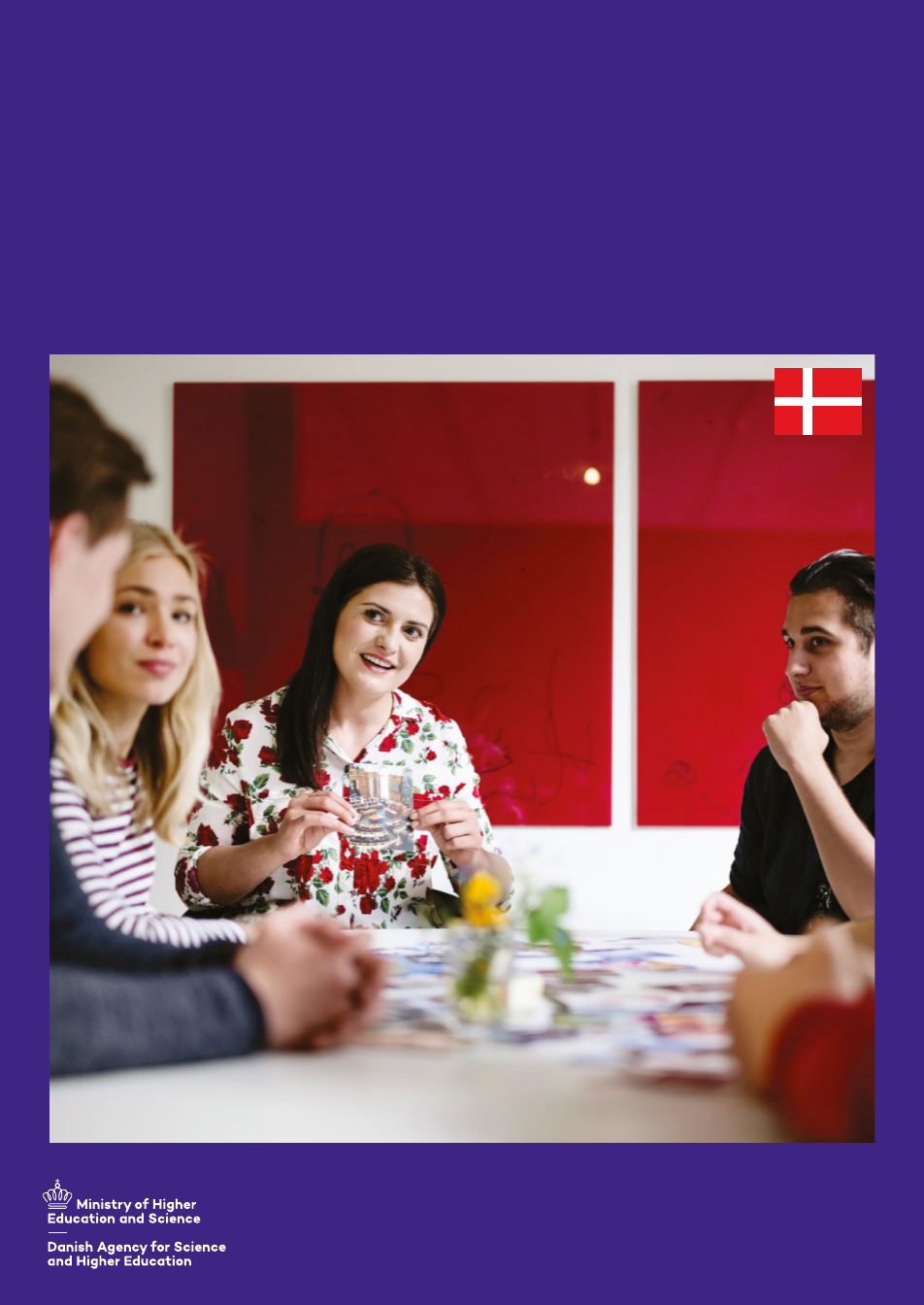
Guidance in Education
– the educational guidance system in Denmark
Guidance in Education
– the educational guidance system in Denmark
Published by
Euroguidance Denmark, The Danish Agency for Science and Higher
Education
Graphical design and layout:
Rosendahls
Photos
Jakob Dall
Jacob Brodersen, p. 15
Colourbox, p. 24
Printed by
Rosendahls
5th edition, 1
st
impression
April 2020, 5,000 copies
Printed in Denmark
ISBN: 978-87-93706-76-7
ISBN Web: 978-87-93706-77-4
Published with support from the European Commission. This
publication reflects the views only of the author, and the Commission
cannot be held responsible for any use which may be made of the
information contained therein.
The Danish Agency for Science and Higher Education is an agency in the Ministry of Higher Education and
Science. The Agency handles tasks within the overall sector for higher education including an enhanced focus
on internationalisation and mobility in education.
www.ufm.dk
Guidance in Education
– the educational guidance system in Denmark

4
Facts & Figures
– Population: 5,806,081 million; approx. 1.3% of the total EU
population (2019)
– 0-19 years: 22.4%
– 20-59 years: 52.1%
– 60 years + 25.5%
– Percentage of a year group applying for a youth education
programme: 92.1% (2018)
– Percentage of a year group completing a higher education
programme: 61% (Profile Model 2015)
– Labour force: 2,935,000; 52.2% men, 47.8% women (2019)
– Unemployment rate (LFS – Labour Force Survey): 5.2% (2019)
– Gross unemployment rate 16-24 years: 1.8% (2019)
– Gross unemployment rate (25-29 years): 7.0% (2019)
Sources:
Statistics Denmark
Ministry of Children and Education
Ministry of Higher Education and Science

5
Introduction
Provision of educational and
vocational guidance for young
people is given high priority in
Denmark.
The Danish guidance system
aims to give easy access to
high quality guidance services.
Guidance is regarded as a
continuous process that should
help young people become more
conscious of their abilities,
interests and possibilities, thus
enabling them to make decisions
regarding education and
employment on a qualified basis.
Today, the Ministry of Children
and Education and the Ministry
of Higher Education and Science
are responsible for guidance
and have a controlling and
coordinating role in relation to
the guidance system.
This publication gives an
overview of the key elements of
the Danish guidance system in
the educational sector, which
is primarily concerned with
guidance services for young
people.
An online version of the present
publication is available at:
www
.ufm.dk/en/euroguidance

6
Guidance in Denmark
In Denmark, guidance within the
education system is regulated
by a specific act of parliament.
The Danish Consolidation Act
on municipal provision for
young people under 25 (Lov
om kommunal indsats for unge
under 25 år) covers among other
things educational guidance in
relation to the choice of youth
education. It supports the Danish
Government’s declared goal that
by 2030 90% of all young people
should be completing a youth
education programme before
their 25th birthday. Guidance in
relation to the transition to higher
education is regulated in the Act
on Study and Career Guidance
Denmark (Lov om Studievalg
Danmark).
The Government wishes to make
it easier for citizens to make
realistic decisions about learning
opportunities and careers - for
the individual’s own sake and for
the good of society as a whole.
The Danish guidance system
- and changes made since the
reform in 2004 - should be seen
in this perspective. The Danish
guidance system consists of
various elements, which can be
seen on the following page.
Key elements of the Danish
guidance system are:
– Municipal youth guidance
units, which provide guidance
services for young people
up to the age of 25 years,
focusing on the transition from
compulsory to youth education,
or, alternatively, to the labour
market.
– Study and Career Guidance
Denmark, which provides
guidance for students in youth
education programmes and
for young people and adults
outside the education system
who wish to enter a higher
education programme.
– eGuidance, which can be
reached by e-mail, chat, phone
or text message seven days a
week from morning to evening.
eGuidance is for all citizens –
young persons and adults.
– The national guidance
por
tal: www.ug.dk
is an ICT-
based careers information
and guidance portal. The
portal helps people to find
information that enables them
to make qualified decisions
about education, training and
careers.
General legislation regulating
guidance in Denmark covers
guidance in the educational
sector, with special emphasis
on guidance in connection with
transitions within the educational
system.
The Acts referred to define seven
main aims of guidance. According
to these aims, guidance related to
the choice of education, training
and career must:
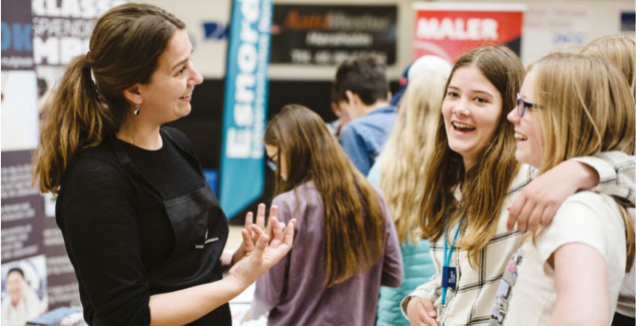
7
– help to ensure that the choice
of education and career will be
of greatest possible benefit to
the individual and to society,
and that all young people
complete an education leading
to vocational/professional
qualifications or a job;
– particularly target young
people who, without specific
guidance, would have
difficulties in relation to the
choice and completion of
education or training courses
and career choices;
– take into account the
individual’s interests,
personal qualifications and
skills, including informal
competencies, previous
education and work
experience, as well as the
projected need for skilled
labour and self-employed
individuals;
–
contribute to limiting, as
much as possible, the number
of dropouts and students
changing from one education
or training programme to
another, and ensuring that the
pupil or student completes
their chosen education
with the greatest possible
academic/vocational and
personal benefits;
– contribute to improving the
individual’s ability to seek and
use information, including
ICT-based information and
guidance about the choice
of education, educational
institution and career;
– help to ensure coherence and
progression in the guidance
support offered individuals;
– be independent of sectoral
and institutional interests.
Therefore, guidance is to be
provided by practitioners
with an approved guidance
qualification or competencies
recognised as being of the
same level.
T
he last objective is to raise the
quality level in Danish guidance,
including an improvement in the
quali fications and competencies
of guidance counsellors.
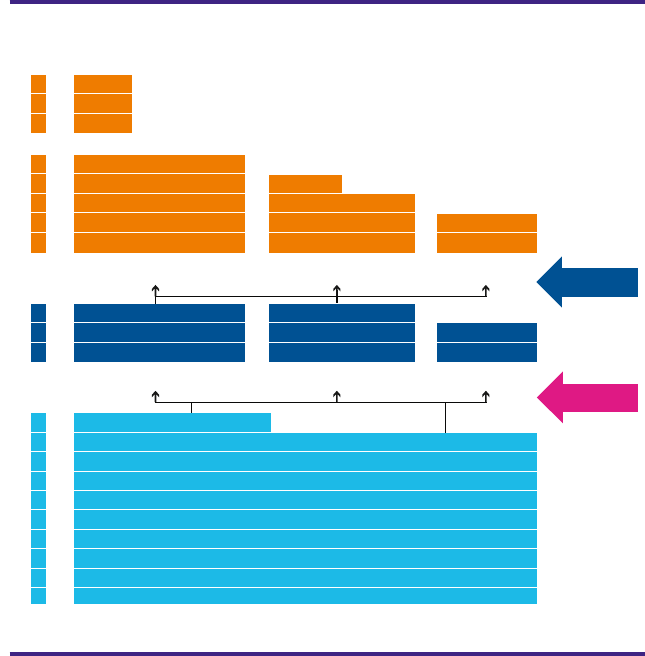
8
Independent Guidance Units
There are three types of units
which are all independent
from sectoral and institutional
interests:
– 98 municipal youth guidance
units (Kommunal ungeindsats)
provide guidance in relation to
the transition from compulsory
education to youth education
and are responsible for
education and training plans
designed to meet individual
needs.
– Stud
y and Career Guidance
Denmark (Studievalg
D
anmark) provides guidance in
r
elation to the transition from
youth education to higher
education.
– eGuidance provides guidance
to all citizens via various
virtual communication
channels: chat, telephone,
text message, e-mail and
Facebook.
Compulsory education begins at the age of 7 (form 1) and ends
after form 9 (age 15). The 10th year is optional.
The term "youth education" is used as an umbrella term for
all upper secondary and vocational education and training
programmes (age 16-19).
20
19
18
17
16
15
14
13
12
11
10
10
9
8
7
6
5
4
3
2
1
higher education
No. of years
Regional
guidance centres
Youth
guidance units
PhD
Candidatus *)
MSc/MA
Professional
BSc/BA bachelor degrees Academy
profession degrees
Long-cycle higher education Medium-cycle Short-cycle
Vocational basic
training
Upper secondary education
programmes
Vocational education
and training programmes
Individual
programme
Compulsory education
higher education
Primary and lower secondary school
*) Some programmes last more than 2 years
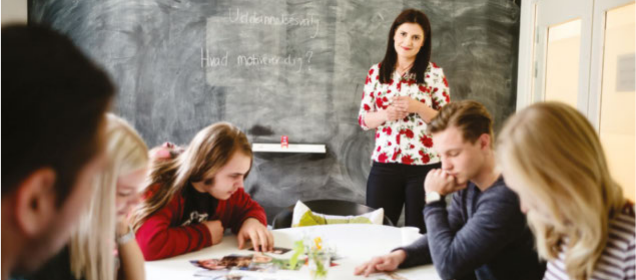
9
Youth Guidance Units
Youth guidance units are found
in all the 98 municipalities in
Denmark. Each unit serves a
municipality in terms of quality:
quality as regards the number
and variety of youth education
institutions in the area, as
well as cooperation with other
municipalities. The local councils
are responsible for guidance
services, as well as coordinating
educational, employment and
social efforts in the municipality.
The municipalities can decide
for themselves how they want
to organise the youth guidance
units, as long as they fulfil their
purposes and responsibilities.
According to the Consolidation
Act on municipal provision for
young people under 25, all 15-
17 year-olds have an obligation
to be enrolled in some course
of education, some kind of
employment or other activities
designed to ensure that they will
get an education or a job. The
youth guidance units also assess
the extent to which young people
have the academic/vocational,
personal and social competencies
to begin and complete an upper
secondary education.
The municipal youth guidance
units provide guidance services
for young people up to the age
of 25 years, focusing on the
transition from compulsory to
youth education, or, alternatively,
to the labour market. Their main
target groups are:
–
Pupils in lower secondary
school (forms 7 to 9) and pupils
attending the optional form 10.
–
Young people under the age
of 25 who are not attending or
have not completed a youth
education programme, and
are not attached to the labour
market.
– Other young people under the
age of 25 who are seeking
guidance in relation to youth
education programmes or
employment.
–
Young people with a special
need for guidance concerning

10
the choice of education,
vocation and career. This is a
diverse target group of young
people with various problems
related to the continuation or
completion of an education
programme.
In cooperation with school
principals, the youth guidance
units organise guidance
activities at schools – close
to the pupils. Teachers are
responsible for the provision of
general career education from
form 1 to form 9, but the youth
guidance units serve as a source
of coordination, inspiration and
further development in this area.
Guidance specifically
related to the transition from
compulsory to youth education
is the responsibility of the
youth guidance units – but
it is provided at the pupils’
schools. The aim of the guidance
process is to develop the pupils’
self-knowledge and ability to
make decisions regarding their
education and career. It concludes
with the drawing-up of an
individual transition plan in form
9, describing plans and objectives
after compulsory schooling. Since
January 1, 2019, it is mandatory
for citizens under the age of 25
to have an educational plan if
they have no upper secondary
education, and are not attached
to the labour market.
Introduction courses to youth
education must take place in
form 8. Bridge-building and
contact person schemes are
important tools in form 9 and
bridge-building also in form 10.
In form 9, bridge-building is an
obligatory activity targeted at
pupils who in form 8 who have
been assessed as not being ready
for youth education. In form 10,
bridge-building is an obligatory
activity for all pupils.

11
The units are obliged to establish
contact with young people under
the age of 25 who have not
completed a youth education
programme and are outside
the education system or the
labour market. Together with
the individual young person, the
guidance counsellors discuss
different opportunities and
schemes that may help them get
back into education, training or
employment.
The youth guidance units are
based on guidelines from the
municipal councils, who define
the overall framework for the
guidance activities within the
scope of the Act on Guidance.
Quality assurance is emphasised
in the guidance reform.
Transparency in relation to the
activities and results of the youth
guidance units is important in
order to assure a high level of
quality. For this reason, objectives,
methods, planned activities as
well as the performance of each
unit are required to be published
on the municipality website. It is
the responsibility of the municipal
councils to ensure a continuous
focus on raising the quality and
uniformity of guidance. As a
minimum, this includes figures
concerning the scope, results and
effects of the guidance provided.
Furthermore, the municipalities
must annually discuss and act
on the search patterns in the
transition between compulsory
and youth education, as well
as making a plan for following
up on the development of the
whole area of guidance, based
on the results and effects of the
guidance provided.
Cooperation across sectors is
a key issue in the Act on Act on
municipal provision for young
people under 25. The aim is to
ensure a coherent guidance
system and a regular exchange
of experiences, knowledge
and best practice. The youth
guidance units are thus obliged
to cooperate closely with primary
and lower secondary schools and
youth education institutions in
the area, as well as with local
businesses, public employment
services and youth guidance
units in other municipalities, if
relevant.
Some facts about the school year 2017/18:
– 67,
455 pupils in form 9 and 35,254 pupils in form 10.
– 66 % in municipal primary and lower secondary schools
(Folkeskoler), 18 % in free elementary schools (Frie
grundskoler), 12 % in continuation schools (Efterskoler) and
3 % in other schools (uddannelsesstatistik.dk)

12
CASE STORY By the Head of Youth Services and Education, Anders Ladegaard
Provision for young people in the
municipality of Fredericia
The provision for young people
is divided into broad, general
measures targeting all young
people, and specific measures
targeting young people with
different types of challenges
in relation to education, jobs
and life as a whole. Both target
groups range from form 7 until
the age of 30.
Broad, general measures
These measures are directed
at forms 7 to 10 and consist of
collective counselling, group
counselling, individual counselling
and a number of other activities,
such as introductory courses
and bridge-building courses
between compulsory schooling
and upper secondary education,
business internships, company
visits, educational fairs, etc. In
forms 8, 9 and 10, the counsellors
evaluate the readiness of all
individual pupils for upper
secondary education. The
process ends with a portfolio, an
education plan and enrolment
on a youth education course or
an individual programme. The
professional guidance counsellors
at the youth guidance unit are
responsible for all these tasks
in both municipal and private
primary and lower secondary
schools in the municipality of
Fredericia. The youth guidance
unit coordinates all the efforts
in collaboration with the primary
and lower secondary schools and
youth education institutions in
the municipality.
– The municipality of
Fredericia has a population
of 51,427 people
– 10,100 young people
(12-30 years old)
– 18 primary and lower
secondary schools
–
14 full time guidance
counsellors employed in the
youth guidance unit
– The provision for young
people as a whole consists
of more than 40 employees
with different tasks
Specific measures
Specific measures aim to meet
the requirement that all young
people with special challenges
should have a single point of
entry to the municipality, by
ensuring that they have a single
contact person and that all
measures are coordinated in one
educational plan. The provision
for young people in Fredericia
Municipality is divided in a matrix
structure involving the job centre,
the social centre, the schools and
the youth guidance unit.
The focal point of the specific
measures is the educational
plan drawn up by the guidance
counsellors in cooperation with
the young people and their

13
All young people with
special challenges should have
a single point of entry to
the municipality
parents in connection with the
transition from compulsory
education to upper secondary
education, or to individual
programmes. In most cases,
the contact person is a
guidance counsellor who is also
responsible for coordinating
efforts involving the job centre,
the social centre, the schools
and the youth guidance unit.
In order to optimise cross-
sectoral cooperation, we have
developed a joint sparring and
meeting design to train all
relevant staff. We also set aside
three hours each week in which
staff meet and coordinate their
efforts. We call it systematic,
relational coordination, where
the goal is to create simplicity
and clarity for the individual
young person through an
educational plan involving all
actors.
Our goal is that 90% of the
young people complete upper
secondary education before they
reach the age of 25 and that the
group of young people who have
neither completed a course of
education nor have permanent
employment will be reduced by
50 %.
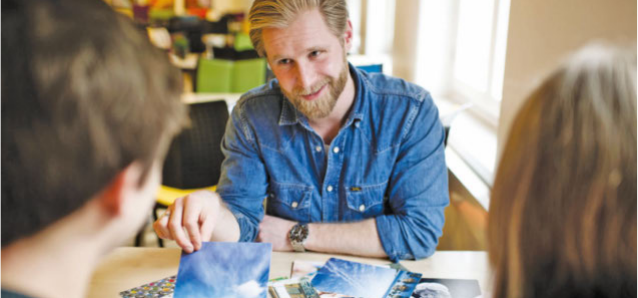
14
Readiness for upper secondary education
In form 8, counsellors biannually
estimate whether pupils will be
able to commence and complete
a youth education after forms 9
and 10, taking into account their
personal, social and academic
competences. In addition to
this assessment, there is an
interdisciplinary evaluation of
the pupil’s competences in terms
of vocational opportunities.
Pupils achieving an average
mark on the Danish grading
system of 04 (and above)
across all subjects are regarded
as possessing the necessary
academic competences in form
8. The school and the guidance
unit in cooperation design a
focused education and guidance
programme for pupils who are
assessed as not ready for upper
secondary education. The goal is
that the pupil should be ready to
attend and complete a course of
education by the end of form 9 or
10. The assessment is repeated
in forms 9 and 10. In forms 9
and 10, academic competences
vary depending on what upper
secondary education is in
question.
Pupils who are not immediately
assessed as ready will, in form
9, participate in a one-week
mandatory bridge-building
course involving the compulsory
school they are attending and
institutions of upper secondary
education, during which they
receive individual as well as
group guidance. The guidance
unit helps this group of young
people to make an informed
decision about educational
choices as well as to apply for a
youth education course.
Pupils who are assessed as
ready for education in form
8 are responsible, along with
their parents, for applying for a
youth education. This group can
search for personal guidance
via the digital education guide
www.ug.dk or by contacting
eGuidance.
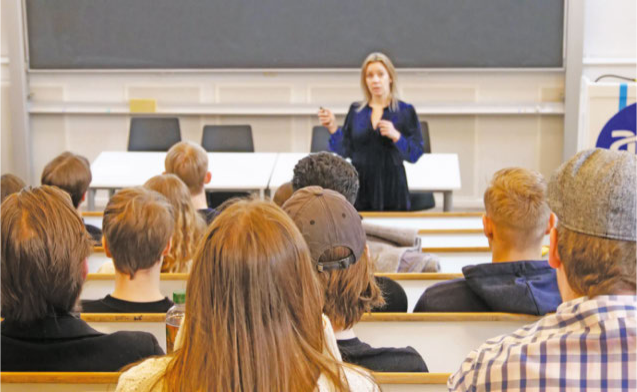
15
Study and Career Guidance
Denmark – seven regional guidance
centres
Study and Career Guidance
Denmark was established on
August 1, 2018 as a new national
guidance institution in the
Ministry of Higher Education
and Science. The organisation
consists of a main office
(secretariat) with an executive
director, and seven regional
centres covering all parts of the
country. The new organisation
has gathered the seven centres
that existed as independent
centres from 2004-2018 into
one national organisation.
Study and Career Guidance
Denmark provides guidance
to young people and adults
about the choice of higher
education and prospective
career opportunities. The
guidance offered is independent
of sectional interests.
Study and Career Guidance
Denmark meets the target
group in their local environment;
guidance in upper secondary
education is mostly offered
as individual conversations,
in small groups or through
common activities. The main
objective is to put the students
in a position to be able to make
qualified decisions about their
choice of higher education
and career. Guidance focuses
on the transition from youth
education to higher education.
The guidance activities give
the students an insight into the
higher education system, help
them reflect on making choices
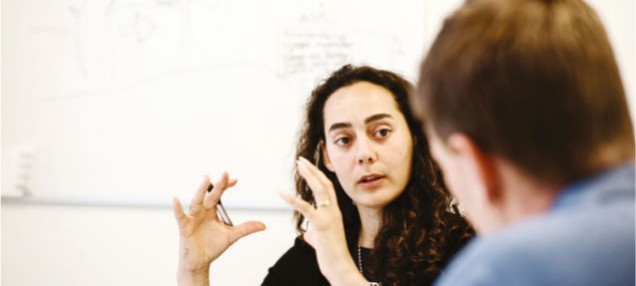
16
about further education, jobs and
careers and strengthen their self-
awareness.
The counsellors organise a wide
variety of educational and career
guidance activities for students
in upper secondary education,
including workshops, seminars,
careers fairs and individual and
group guidance sessions. These
activities take place at the
students’ schools. The counsellors
cooperate closely with the
management and the teachers at
the school.
Young people (and their parents),
as well as adults, are also
welcome to call or visit the
centres to get information about
higher education opportunities,
or to make an appointment for
a guidance session. On a regular
basis, it is also possible to meet
study and career guidance
counsellors from the centres
at different neutral localities
across the seven regions – e.g.
at a public library – to ensure
that geographical distance does
not prevent people from getting
access to relevant guidance
services.
The organisation is obliged to
develop a quality assurance
system. The quality assurance
system incorporates the voices
of users and is very much aimed
at developing the organisation of,
and guidance provided by, Study
and Career Guidance Denmark, as
well as at assuring a basic level of
quality. Information provided by
the quality assurance system will
be both quantitative, for example
through surveys, and qualitative,
for example through group
interviews.
Study and Career Guidance
Denmark cooperates with relevant
partners at the national, regional
and local levels to ensure a
coherent guidance system and a
regular exchange of experiences,
knowledge and best practice.
Relevant partners include youth
education and higher education
institutions, the social partners
and industry and commerce.

17
CASE STORY By Head Torben Theilgaard
Study and Career Guidance
Denmark, Centre for the Capital
Region
The Capital Region of Denmark is a region with a total population
of 1.8 million people
121 youth education institutions
45,000 students in general upper secondary education
30,000 students in vocational education and training (VET)
18 study & career guidance counsellors are employed at the
centre for the Capital Region
Our guidance service concerns
the choice of higher education
and paths in working life.
Guidance activities differ
depending on the target group,
but generally speaking our main
objective is to put citizens in a
position where they themselves
are capable of making qualified
decisions about transitions from
one level of education to another,
from education to working life
and changing paths in their
working life.
In Denmark, general upper
secondary education gives
formal access to the entire range
of higher education programmes,
while vocational education and
training gives access to a broad
number of higher education
programmes. Therefore, study
and career guidance counsellors
visit every youth education
institution to inform the students
on their opportunities regarding
a continuation of their education
at higher levels.
In general upper secondary
institutions in our region, we
work in groups (often individual
classes or classes together)
to encourage students to stay
curious, to have the desire and
courage to explore possible
scenarios and transitions in life
– often focussing on the first
transitions they face: higher
education programmes.
To accomplish these goals, we
offer:
– Three obligatory sessions with
each class
– One to two obligatory sessions
with more classes together
– A number of workshops with
themes that help them get an
overview of their situation
–
Individual guidance for
students (at their school)
–
Meetings to which the school
invites parents
Through these events, we ensure
that students are confronted

18
with different perspectives on
transitions, higher education and
working life several times during
their two to three years in general
upper secondary education.
Each study and career guidance
counsellor is responsible for
a number of schools, and this
ensures that students become
familiar with their guidance
counsellor. But it also means
that the guidance counsellor
remains on ‘neutral ground’, in
the sense that he or she does not
know the students individually
from classes, as teachers do,
something that many students
consider to be an advantage,
because they are not met with
preconceived opinions when
discussing their own thoughts
about their future with the study
and career guidance counsellor.
Young people and adults are
welcome to call, e-mail or book
an appointment at our centre in
Copenhagen. Here we offer both
individual and group guidance
sessions.
All clients need to be empowered
and placed in a position where
they are capable of choosing and
applying for a higher education
programme by themselves
and have some idea of the
opportunities open to them in
their working life.
Our main objective is
to put people in a position to
make qualified decisions about
transitions from one level of
education to another,
from education to
working life and when
changing paths in their
working life.
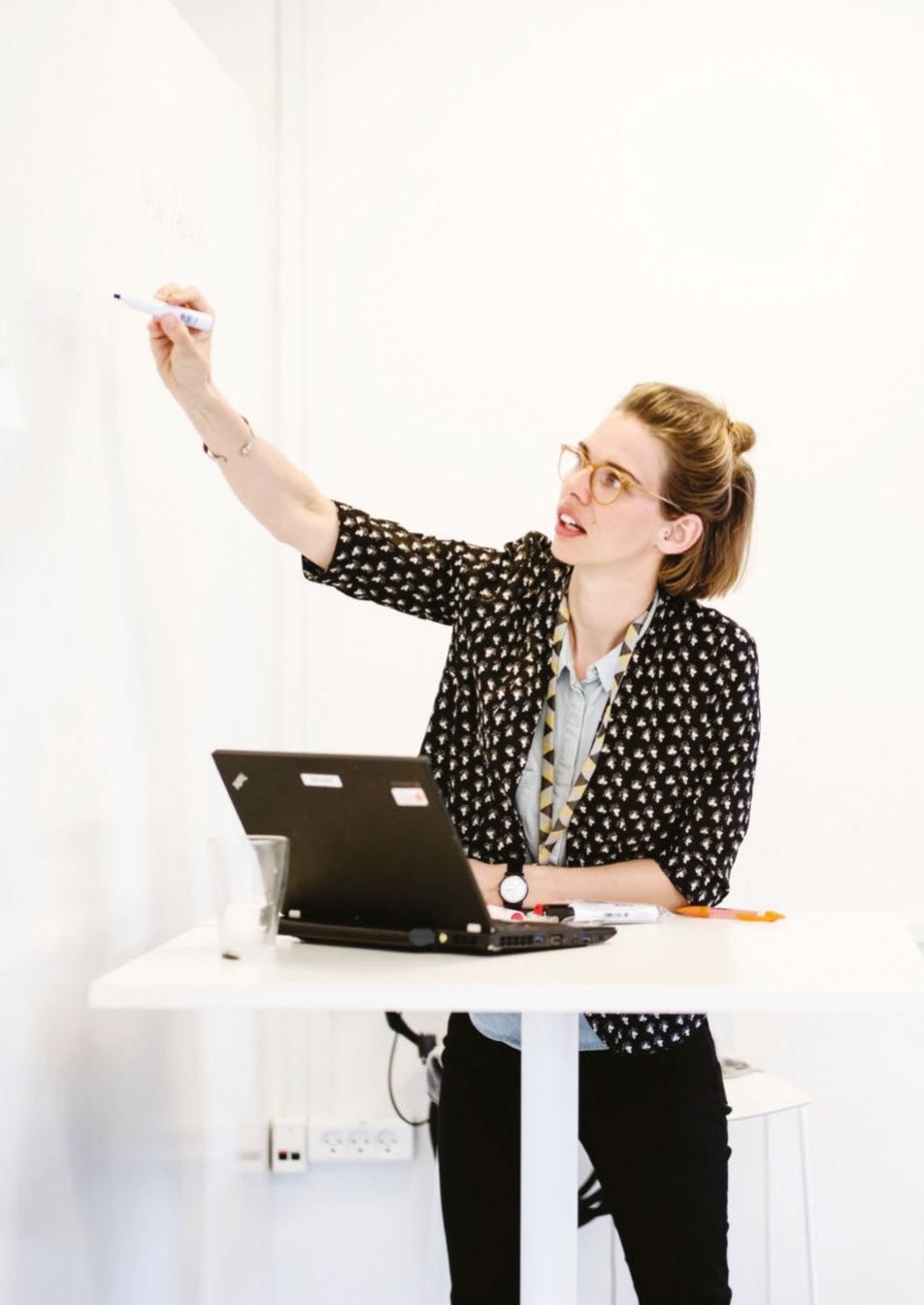
This page has been intentionally left blank.
19
20
eGuidance By Counselling Coordinator, Else Lücking
eGuidance was launched in
January 2011 and provides
individual and personal guidance
to all citizens via various virtual
communication channels: chat,
telephone, E-mail, webinars and
social media.
eGuidance is for everyone
who wants information and
guidance about education and
employment and may also refer
users to the digital guidance
tools on the national portal,
The Education Guide UG.dk. We
play a central role as guides to
the national guidance portal.
At the outset, eGuidance
was especially targeted at
resourceful young persons and
their parents, to give them
easy access to independent
information and guidance
and hereby motivate them
to continue the search and
clarification process on their
own. In 2018, eGuidance became
the main career guidance
service for adults looking for
further training or education.
U
sers can contact eGuidance
in the daytime and evenings,
as well as at weekends. Many
people appreciate the fact
that they can get in touch
with a guidance counsellor
on, for example, a Tuesday
evening or Saturday afternoon.
Users contact eGuidance with
questions relating to youth
education as well as higher
education and adult education.
Because of the high percentage
of Facebook users in Denmark,
eGuidance is also present on
this platform with three different
pages. One page for all citizens,
one especially for parents with
children in secondary school and
one for adults. eGuidance can
also be followed on Twitter and
LinkedIn. Activity on the social
media generally happens on the
front interface or news feed,
where it is public for everybody
to see and share.
Webinars are held as a
supplement and as another
way to offer guidance - on
how to choose and apply for
further education, for example.
Webinars are also held in
English for citizens from other
countries who wish to apply for
admission to a higher education
programme in Denmark.
The communication channels
are used differently by different
user groups. Chat is especially
popular among the young users;
many of them feel that they
express themselves better in
writing and anonymously, and

21
Extract from a chat guidance session with eGuidance
Date: 30-01-2014,
10:14:53 Linda starts a chat
10:15:37 Counsellor Vibeke: Hi Linda
10:15:38 Linda: I’m desperate right now and really need someone
to tell me that I can get another chance…
10:16:26 Counsellor Vibeke: That doesn’t sound very nice, what
do you mean by another chance?
10:16:33 Linda: I finished 3.g* in 2010 and have been kicking
myself ever since because I’ve been so stupid. I chose
a direction which was too hard for me and I continued
with it even though I couldn’t keep up with the level.
10:17:10 Counsellor Vibeke: Why do you think you’ve been
stupid?
10:17:46 Linda: Because I continued instead of changing to
another direction… my marks are terrible, so my average
is incredibly low.
10:18:56 Counsellor Vibeke: OK, I understand, but you can still
get admission to a lot of courses if you’ve passed your
upper secondary school exams.
10:19:50 Linda: At all the places I have the slightest interest in
applying to, the average mark for admission is at least 6.
10:20:38 Counsellor Vibeke: OK, where in the country are you
applying?
They investigate the options together.
*last year of general upper secondary school

22
many wish to be able to save
the answers. Parents and adults
prefer to contact us by phone.
Sessions with eGuidance
take place anonymously.
Consequently, eGuidance
cannot play a role in specific
cases that, for instance,
the youth guidance units
are responsible for. Clients
appreciate the anonymity, which
in many cases makes it easier
for them to ask their questions.
eGuidance employs a number
of full-time counsellors and a
number of counsellors who work
part-time for eGuidance and
part-time at a youth guidance
unit.

23
National Guidance Portal
The national guidance portal:
www.ug.dk, la
unched by the
Ministry of Children and
Education, is an ICT-based careers
information and guidance portal.
The portal provides citizens -
young people and adults - with
substantial careers information in
order for them to make qualified
decisions about education,
training and careers.
The portal provides comprehen-
sive and up-to-date information
on:
– youth education and training
programmes
–
higher education programmes
– occupations/professions
–
labour market issues
– study programmes taught in
English at Danish colleges and
universities
T
he portal provides different
types of guidance tools that
facilitate the choice of education,
occupation and careers). The
portal also provides specific entry
points for different target groups:
–
young people seeking youth
education programmes
–
young people seeking higher
education programmes
– persons seeking adult
education programmes
– parents wanting to support
their children in their choice of
education
From the portal you can easily
find and reach the regional
guidance centres, the youth
guidance units, eGuidance and
the educational institutions. It
also gives access to important
and updated information,
guidance tools and relevant
websites.
The portal is updated on a day-
to-day basis in order to have
new and updated information
available all the time. Users can
choose to receive electronic
newsletters whenever there
is relevant news concerning
guidance, education and the
labour market.

24
Guidance in Relation to Completion
of Education within General and
Vocational Upper Secondary
Education
The upper secondary schools
(Gymnasier and VET colleges)
are obliged to offer guidance
to students in a way that
enables them to complete their
education. Students enrolled in
an upper secondary school will
therefore have support from
school staff, such as teachers,
guidance counsellors or other
professional staff members,
who support students in various
ways. Institutions are free to
choose their methods and the
appropriate staff to support
students in completing their
education. The work being done
at institutions by guidance
counsellors, teachers or other
professional staff members is an
important part of the national
effort to reduce drop-outs
in education and to support
students in their efforts to
complete their education.
Educational institutions
cooperate with the youth
guidance units and the regional
guidance centres in order to
ensure coherence in guidance.
This cooperation has both a
general and a more specific
perspective regarding students
at risk of dropping out of
education.
If students do not complete their
education, it is up to the youth
guidance units to guide them,
so they can find another course
or become a part of the labour
market.
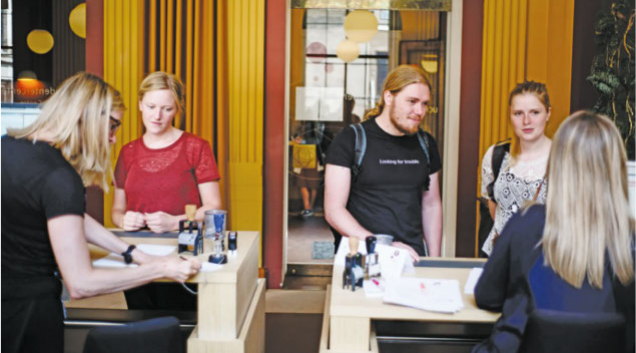
25
Guidance in Higher Education
Guidance at business academies,
university colleges, artistic
higher education institutions and
schools of maritime education
and training
These institutions are obliged
to offer guidance to students
in a way that enables them
to complete their education.
Students will therefore be looking
for support from the school
staff, such as teachers, guidance
counsellors or other professional
staff who can support students
in various ways. The institution
is obliged to prepare guidance
guidelines targeted at potential
dropouts. Furthermore, the
institution is obliged to
encourage these students to
seek guidance at Study and
Career Guidance Denmark.
The institutions are free to
choose their methods and the
appropriate staff to support
students in completing their
education.
Guidance at Danish universities:
Completion and Career Guidance
The universities offer guidance
to students
at bachelor’s and
master’s levels concerning their
current programme,
access
requirements for master’s
and PhD programmes and
subsequent employment
prospects. Each university is free
to decide how and by whom this
guidance is offered. In general,
completion guidance and career
guidance are divided between
different bodies.
The universities publish and
maintain information about
bachelor’s and master’s
programmes with examples of
professions and jobs that these
programmes may lead to. They
also provide information about

26
options and recommended
configurations of the programme
of interest to the student,
including the choice of a master’s
programme after completion of a
bachelor’s degree.
Furthermore, the universities
have an obligation to give
students who have been delayed
in their studies special guidance
in order for them to continue
their education.
The universities are obliged to
encourage these students to
seek guidance at Study and
Career Guidance Denmark.

27
Training of Guidance Counsellors
One of the objectives of the
Danish guidance system is to
improve the qualifications and
competencies of guidance
practitioners, in order to provide
more professional Danish
guidance services. Consequently,
one common training programme
is offered to guidance counsellors
from all sectors. Guidance
practitioners working in the
municipal guidance units, the
regional guidance centres and
eGuidance are required to
complete the diploma or master’s
programme in educational and
vocational guidance or the
bachelor’s degree programme
in public administration.
Alternatively, guidance
practitioners with extensive
experience in the field can apply
for assessment and recognition
of their competencies and prior
learning. The diploma programme
is not a requirement for guidance
practitioners working in other
institutions.
Five university colleges across
the country offer the diploma
programme on a part-time basis.
It is equivalent to 12 months of
full-time studies and consists of
three basic modules, two or three
optional modules and a diploma
project. It has a value of 60 ECTS
points. The training programme
is offered as an adult learning
programme and corresponds
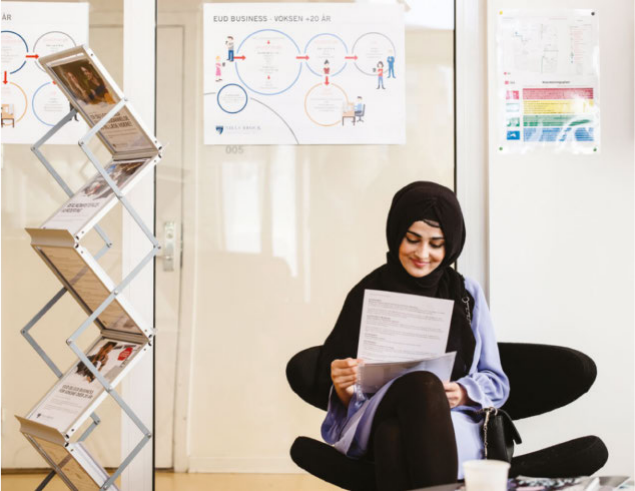
28
to a diploma degree. Entry
requirements are, as a minimum,
a completed short-cycle
(two-year) higher education
programme and two years of
relevant working experience.
Furthermore, it is possible to
follow a master’s programme in
guidance at Aarhus University.
It is equivalent to 12 months
of full-time studies and has a
value of 60 ECTS points. Entry
requirements are, as a minimum,
a completed medium-cycle
(three-year) higher education
programme and two years of
relevant working experience.
Both training programmes are
offered within the framework
of the Danish adult education
and training system. They are
aimed, and adapted to, adults
who already have another higher
education degree and two years
of relevant work experience.
The university colleges also offer
a 3.5-year full-time bachelor’s
degree programme in public
administration, corresponding
to 210 ECTS. The degree makes
it possible to specialise within
several areas of the public
administration field, including
educational and vocational
guidance. The degree contains
compulsory and elective
subjects, a six-month internship
period and a bachelor project.
Admission requirements: upper
secondary education or relevant
vocational education.
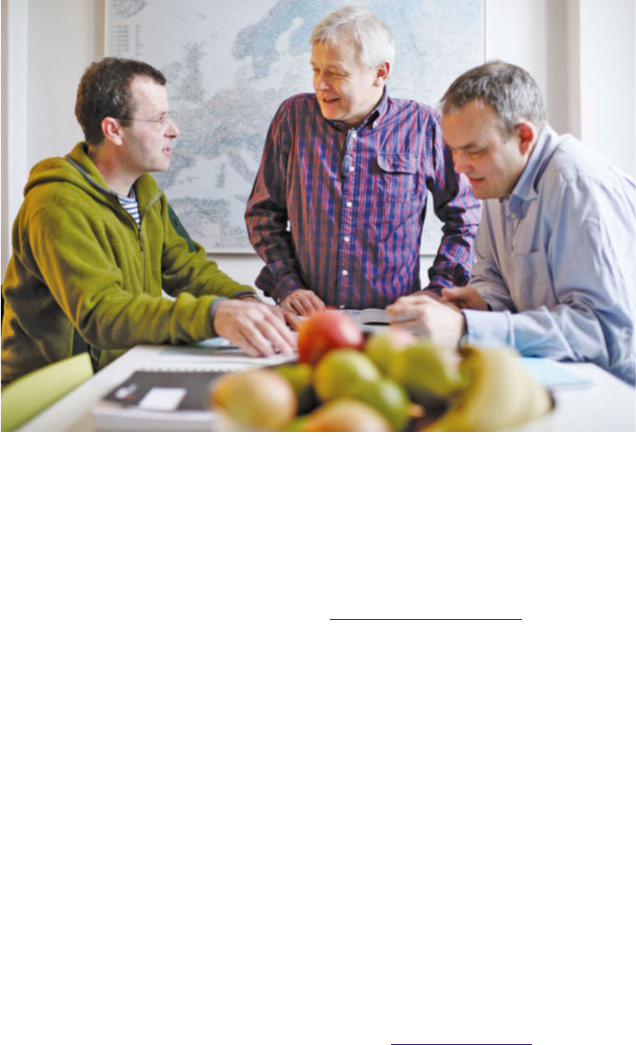
29
International Perspectives
Lifelong guidance is on the
agenda in many international
fora, and the main aims and
components of the Danish
guidance system are very much
in line with the EU and OECD
recommendations on guidance
policies and practices.
The Danish Ministry of Children
and Education is also aware of
the importance of promoting an
international dimension in Danish
guidance. International activities
for guidance practitioners
are initiated by the Danish
Euroguidance centre, part of the
Danish Agency for Science and
Higher Education, which is an
agency within the Danish Ministry
of Higher Education and Science.
The Euroguidance Network
www.euroguidance.eu includes
n
ational centres in 36 European
countries and is partly funded
by the EU through the Erasmus+
Programme. The network supports
the development of the European
dimension in educational
and vocational guidance and
promotes mobility, mutual
awareness and cooperation
between guidance services in
Europe.
Furthermore, the Ministry of
Children and Education is part
of the International Centre for
Career Development and Public
Policy, www
.iccdpp.org.

This page has been intentionally left blank.
30

31
Further Information
The Danish education system:
www.eng.uvm.dk or https://ufm.dk/en/
educ
ation/the-danish-education-system
Stud
ying in Denmark:
www.studyindenmark.dk
Working in Denmark:
www.workindenmark.dk
Denmark in Figures 2019:
www.dst.dk/en/Statistik/Publikationer/
VisPub?cid=28924#
The Euroguidance Centre in Denmark:
www.ufm.dk/euroguidance (in Danish) or
www.ufm.
dk/en/euroguidance
(in English)
En
quir ies concerning guidance in Denmark
may be addressed to:
euroguidance@ufm.dk
The Euroguidance network:
www.euroguidance.eu

